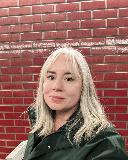Caylin Smith is Head of Digital Preservation at Cambridge University Library.
This post was originally published on the Cambridge University Libraries Digital Preservation blog and can be found at this URL: https://digitalpreservation-blog.lib.cam.ac.uk/hello-world-fa267483a86d
Welcome to the first Digital Preservation at Cambridge University Libraries (CUL) post!
CUL is a network of libraries at the University of Cambridge comprised of Cambridge University Library, the main research library for the University, as well as faculty and departmental libraries.
Digital preservation is incredibly important to the Libraries. This discipline is fundamentally about ensuring access to digital materials for as long as necessary — and that’s what staff working in this area at CUL help achieve for digital materials created or acquired for library collections. We’re keen to share news of what we’re working on because the impact of our digital preservation work will extend right across these libraries.
Collection materials are vast and diverse, ranging from digitised versions of print and physical artefacts within Special Collections; the research outputs of Cambridge University; born-digital archives from personal, corporate, and University donors; and more!
The profile of digital preservation here has grown immensely over the past few years, building on the legacy of the Polonsky Foundation Digital Preservation Project (2016–2018). Cambridge University Library has had a Digital Preservation team since autumn 2019 and during the summer of 2021 the team was expanded to deliver what we’re calling the CUL Digital Preservation Service.
We aim to use this channel to unpack and share the complexities around our work to communicate more openly and widely with institutions and individuals working elsewhere in digital preservation and related disciplines.
Today is also World Digital Preservation Day! WDPD is an annual event organised by the Digital Preservation Coalition, a UK-based membership body, to bring together practitioners to share and promote their work as well as to advocate for this important discipline.
This year’s theme of ‘Breaking Down Barriers’ resonates strongly with the team delivering CUL’s Digital Preservation Service and provides a good opportunity to explain how the preservation of digital materials is a collaborative undertaking.
Here are some specific examples of how we’re breaking down barriers:
-
Open-source solutions are being used to support activities that ultimately help ensure current and ongoing access to digital materials. Part of the team’s focus has been on investigating existing solutions so as to not re-invent the wheel. We’ve been fortunate to work closely with peers at Wellcome Collection to test out their Preservation Storage Servicealong with peers at the National Library of Scotland. This work has provided the opportunity to assess this service against CUL’s needs for managing the storage of digital materials from across collections.
-
We’re keen to get feedback on our architecture and design, so we have set up a technical advisory group of peers working in digital preservation at other collecting institutions. This group will provide a forum for us to present our thinking and receive advice and guidance to help steer our work. Digital preservation isn’t new to CUL, but new territory is being explored around the use of open-source solutions and cloud computing.
-
Born-digital archives are a complex area that we’re learning more about, and to help us gain knowledge of materials and our colleagues’ user needs we have set up a Born-Digital Archives Working Group that also includes our archivist colleagues. This group will provide a forum to facilitate learning new skills, sharing ideas and knowledge, and planning user testing.
-
Lastly, along with using open-source solutions, we want to communicate openly about our challenges and successes — what’s worked, what hasn’t — to share this knowledge with our colleagues as well as the wider digital preservation community and parallel communities. More information about what this means can be found in the CUL Digital Preservation Policy.
So what kinds of topics can you expect the team to write about here?
We aim to design and build efficient services whose steps are automated wherever possible. To lay the foundation for this approach, we’re researching, auditing, and documenting the materials within collections containing digital materials to identify where commonalities exist.
We’ve also applied this process to Cambridge University Library’s analogue audiovisual materials to better understand these materials as well as support planning of the next steps for the ongoing care of physical film and video carriers and migration to digital formats for preservation and access.
We’re aware of a need for external depositors to securely send their digital materials to Cambridge University Library over the web rather than on handheld storage media. To address this need, we’re setting up a deposit service and also thinking through services further downstream to support our archivist colleagues in their work to accession, appraise, and describe these materials within the Library’s archives management system.
And we’ve started setting up cloud environments to run the services we’re building up as well as to store digital files and metadata, and also getting a better understanding of the possibilities of cloud to support other digital preservation activities.
Posts will be written by myself, Natalie Adams, John Gostick, and other members of the team as it grows.
We expect to publish regularly, with more frequent posts initially as we establish our presence here, so please follow if you’d like to stay up to date with our work!
And we welcome any feedback on our posts either in the comments section or via email at digitalpreservation@lib.cam.ac.uk.
Thanks for reading!
